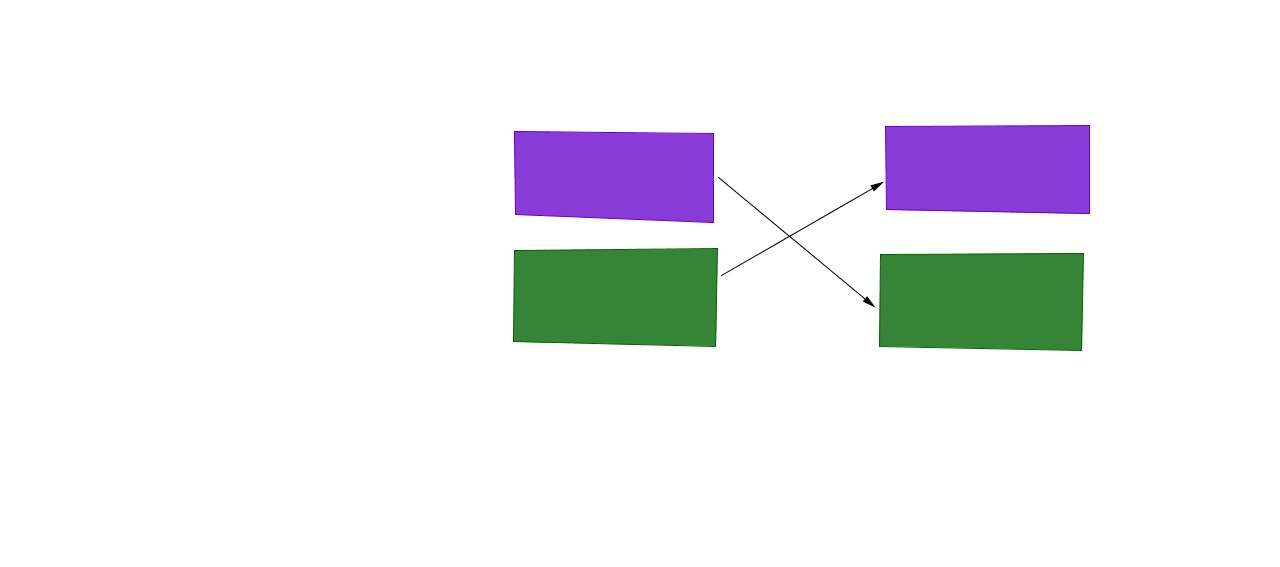In the last post, we introduced the idea of maps, also known as functions.
It’s hard to overstate how important functions are in modern math. Functions make things happen. They explain mathematical relationships. And they make up a language from which mathematical concepts are built.
But before we get to anything like that, let’s look at a few more examples.
First, we’ll consider a map from {a, b, c, d} to {purple, green}.
I’m using some shorthand here: {a, b, c, d} means the collection of things a, b, c, and d. It’s usually called the set containing a, b, c, and d. Similarly, {purple, green} is the set containing purple and green. A set is just a collection of things. I used that word already in the last post, referring to the set of fruit in a bowl, and the set of English words.
Now, map a –> purple, b –> purple, c –> purple, d –> purple.

Every item in {a, b, c, d} gets associated to one item in {purple, green}. It’s sort of a boring function, because everything gets mapped to purple, but it’s certainly a valid one.
The two sets can be the same. Here’s a function from {purple, green} to {purple, green}. We’ll map purple –> green, green –> purple.

You can think of this as mapping a set to another copy of the same set, or you can think of this as mapping a set to itself. The best choice of perspective usually depends on the context.
Finally, here’s a function from {0, 1, 2, 3, 4, 5} to {0, 1, 2, 3, 4, 5}. Let’s map,
0 –> 0,
1 –> 4,
2 –> 2,
3 –> 2,
4 –> 2,
5 –> 1.
So far, this is pretty much the same as mapping colors to colors, or fruits to words. What’s different here is that there’s a convenient way to draw a picture:

You may be tempted to connect the X’s. Don’t. All this picture is doing is representing the map in another way. Rather than drawing arrows, I arranged my numbers into a little box. My function takes each orange number and maps it to the blue number at the same height at the X.
In the next post, we’ll see why this kind of drawing is really useful.
Maybe we’ll even be able to explain those nasty functions that show up in ninth-grade algebra.


